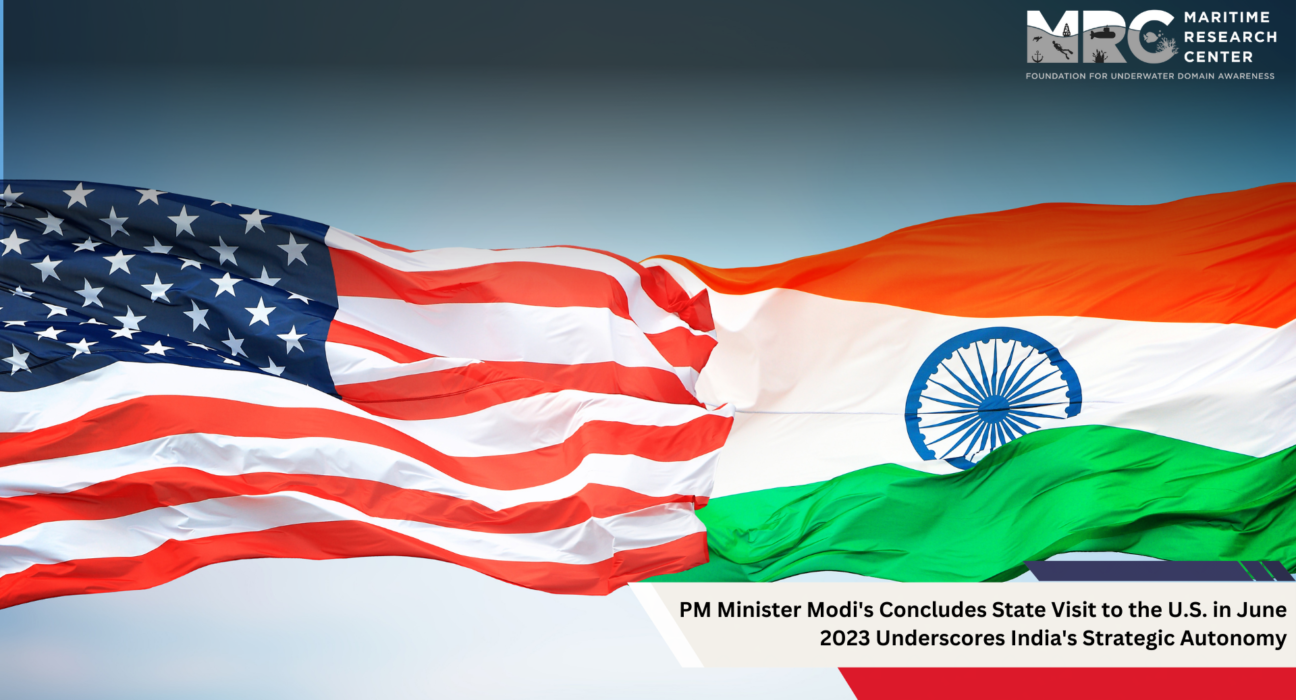- Aquaculture and Agriculture can go hand in hand, boosting the overall cultivation sector.
- In India, aquaculture requires huge investment in terms of skill assistance for the farmers, as most of the population of farmers are unfamiliar with cultivation procedures.
- Technology can reduce the guesstimates involved in cultivation methods and provide accurate estimates.
- Uplifting poor sections of society can be done by opening new job opportunities and aquaculture is one such industry to go with.
Chairing the newly appointed USA House Select Committee on Strategic Competition in February, Mike Gallagher remarked that the competition between the U.S. and the Chinese Communist Party (CCP) is “not a polite tennis match. Rather it is existential, where most fundamental freedoms are at stake”. The Committee’s concerns can be gauged by its recent endorsement for admitting India into the NATO-Plus, ahead of Prime Minister Narendra Modi’s visit to the U.S. The other existing members of NATO-Plus are Australia, Israel, Japan, New Zealand, and South Korea.
India’s response was on expected lines by outrightly spurning the Committee’s proposal. Its relentless pursuit of strategic autonomy and safe distance from any US-led security alliances is motivated by two complementary foreign policy drivers – national interest and multi-polarity.
National Interest:
Prime Minister Narendra Modi and President Joe Biden described this visit as a new stage in the India-U.S. relationship. They reiterated their commitment to climate change and world peace and exalted their shared value of democracy. Nevertheless, India used this opportunity to rebalance its strategic, economic, and diaspora interests. Signing an MoU between General Electric and Hindustan Aeronautical Limited will facilitate the co-production of GE 414 Jet Engines in India for the indigenously developed Tejas Mk2 light combat aircraft. The deal also holds promise for some technology transfer on jet engines.
The innovation platform, ‘INDUS-X’, launched in Washington DC on June 21, got a boost from Micron Technology, a U.S. semiconductor technology and chip maker agreeing to invest up to $825 million in a new chip assembly and test facility in Gujarat. It is a giant leap towards integrating India into the semiconductor value chain for the first time. China has been part of this value chain for decades. In addition, the 27th signatory of the Artemis Accords enables India to learn and participate in the US-led human mission to the moon, expanding space exploration to Mars and beyond and building space stations. More importantly, it will help India to catch up with other space powers.
The U.S. has also announced a pilot project on renewing visas domestically without having to travel outside. This program will cover H1b and L-skilled visas by 2024 and could eventually be extended to other categories. The U.S. has also expected to open two new consulates in Bengaluru and Ahmedabad.
Multi-polarity:
NATO-Plus can arguably be framed in the world’s two most virulent geopolitical spaces – Europe and Indo-Pacific. By eschewing NATO-Plus, India has restated its proclivity for multi-polarity. Exporting more than 360,000 oil barrels daily to Europe, India has overtaken Saudi Arabia – even if India does this by being a crude oil ‘laundromat‘ that buys Russian oil and sells processed products to sidestep European sanctions against Russia. In doing so, India has sought to bridle a mushrooming trade deficit and protect the economic interests of 1.4 billion people. However, India’s abstentions at the UNSC on nearly every resolution condemning Russian aggression vindicates its staunch advocacy for multi-polarity in Europe. Russia’s survival as a major power is essential for a multipolar Europe. Thus, deftly defending its position against sharp international criticism, India has demonstrated that its long-term strategic interest in multi-polarity complements the short-term economics of oil imports from Russia.
The late Alastair Buchan, a former Director of the International Institute for Strategic Studies (IISS), observed that Southeast Asia is “the most dangerous area of the world. If a major conflict should ever occur again, its casus belli will be found somewhere between the Khyber Pass and the China sea[s]”. However, substantial obstacles exist to realising a viable balance of power against China in the Indo-Pacific without the U.S. Firstly, Japan, South Korea and Australia lack nuclear capability and human resources. Secondly, India lacks the economic, technological, and industrial capacity to sustain a prolonged war. It calls for collective action against the common threat. However, India’s shunning of the NATO-Plus shows its desire for multi-polarity in Asia and confidence in deterring Chinese threat on the Line of Actual Control. India-U.S. defence cooperation is an essential enabler to achieve this deterrence.
Raja Mohan has recently argued that true multi-polarity in the Indo-Pacific is a myth. Yet, the Indian security establishment feels that multi-polarity is essential for strategic autonomy and a plausible strategy in the Indo-Pacific. India will achieve it by balancing threat, not power.

Dr Somen Banerjee
About Author
Dr Somen Banerjee, Commodore (Retd) (@BanerjeeSomen1), is a Senior Research Fellow at the Maritime Research Centre (Geopolitics and International Relations)


